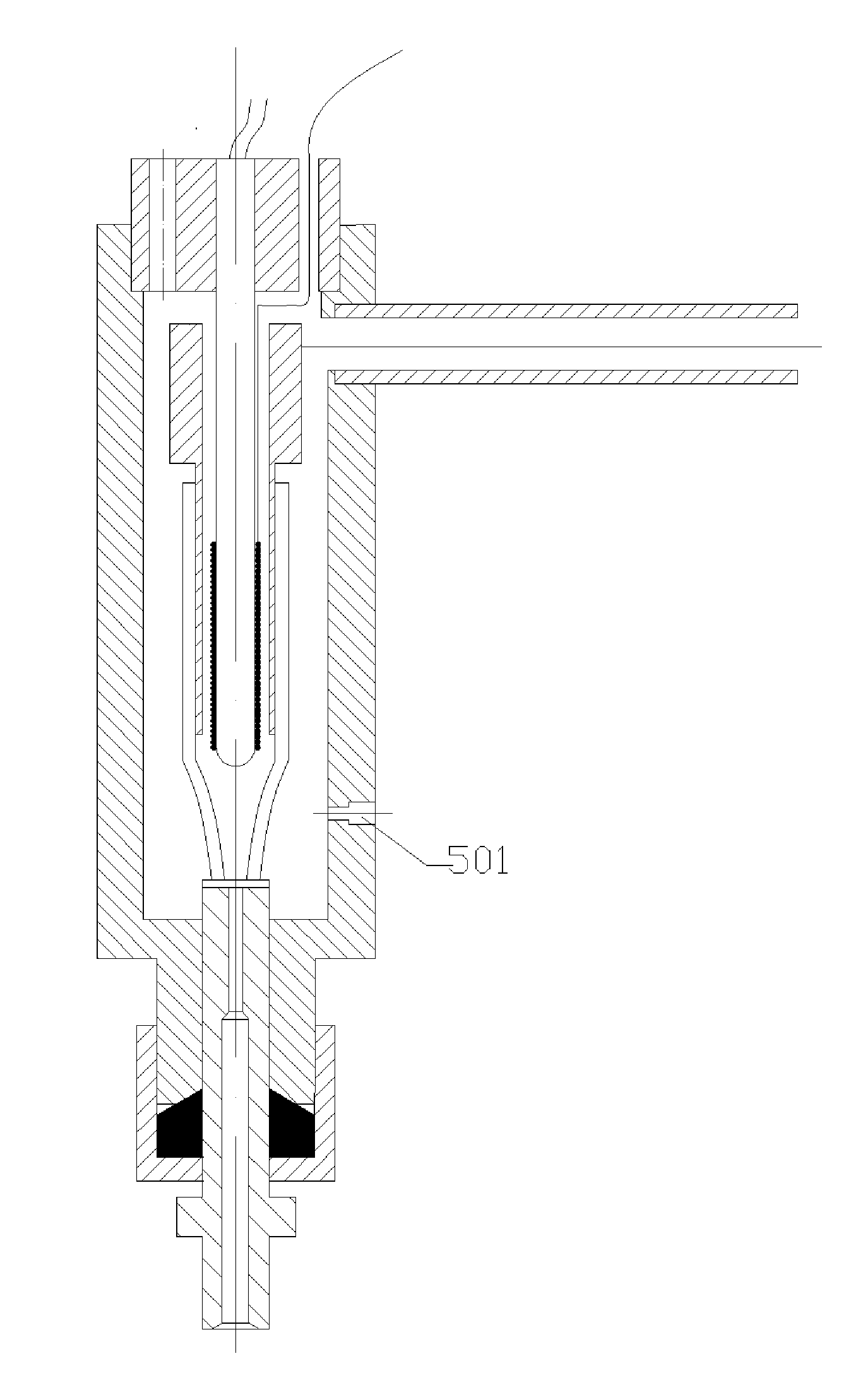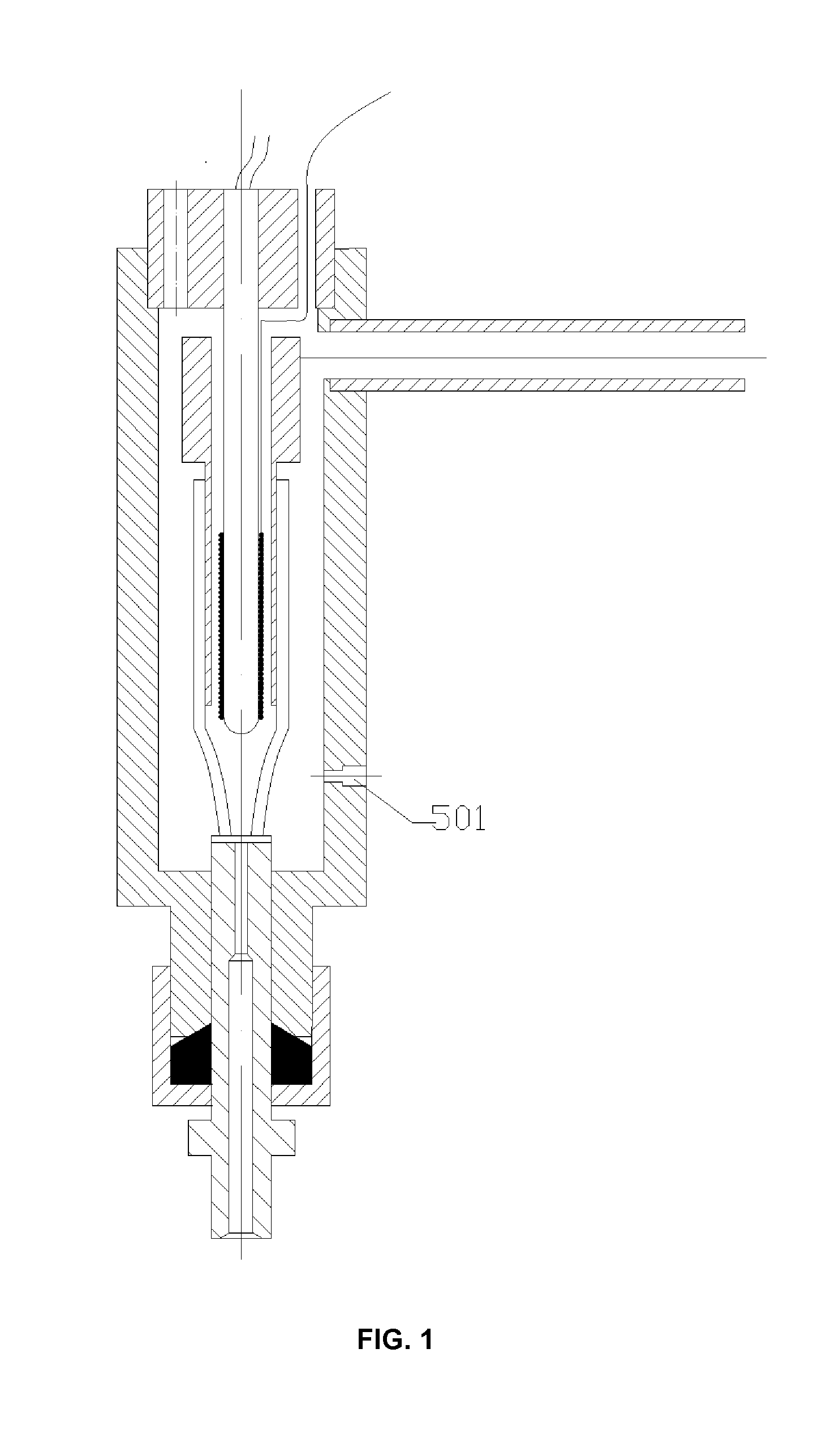Surface Ionization Detector
a surface ionization and detector technology, applied in the field of surface ionization detectors, can solve the problems of low concentration of amines, inability to selectively respond to amines, poor repeatability, etc., and achieve the effects of simple structure, increased surface area, and high detector sensitivity
- Summary
- Abstract
- Description
- Claims
- Application Information
AI Technical Summary
Benefits of technology
Problems solved by technology
Method used
Image
Examples
Embodiment Construction
[0049]A surface ionization detector (SID) comprises a metal emitter, a heating rod, a collecting electrode, a reducing liner with flared bottom, a housing, and so on.
[0050]The heating rod is mounted on the top cap of the housing, whose outer wall is surrounded by the metal emitter. The collecting electrode is cylindrical, and its lower part is placed in the liner, which is placed in the housing. The bottom of the housing is open. The emitter, the heating rod, the collecting electrode, and the liner are kept coaxial. The collecting electrode is electrically connected with an external micro-current amplifier by a lead passing through the housing.
[0051]The metal emitter can be made of molybdenum, platinum, iridium, rhodium or their alloys; often times relatively cheap molybdenum or platinum are adopted. The shape of the metal emitter can be cylindrical or spiral wire. If it is cylindrical, the surface of the cylinder can be thinly grooved into screw thread or gridding to increase the s...
PUM
 Login to View More
Login to View More Abstract
Description
Claims
Application Information
 Login to View More
Login to View More - R&D
- Intellectual Property
- Life Sciences
- Materials
- Tech Scout
- Unparalleled Data Quality
- Higher Quality Content
- 60% Fewer Hallucinations
Browse by: Latest US Patents, China's latest patents, Technical Efficacy Thesaurus, Application Domain, Technology Topic, Popular Technical Reports.
© 2025 PatSnap. All rights reserved.Legal|Privacy policy|Modern Slavery Act Transparency Statement|Sitemap|About US| Contact US: help@patsnap.com



